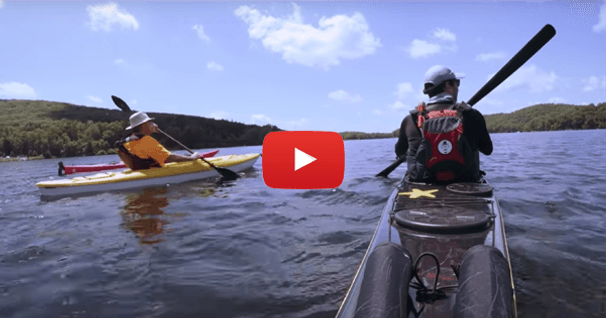Staying upright on your SUP - aka Bracing
This video describes the bracing stroke for your stand up board and will help you learn to stand on your SUP without falling.
Hello, I'm Jimmy Blakeney with Standup.paddling.com here to talk to you about the great sport of stand up paddleboarding. In this video, we're going to talk about how not to fall off or, in other words, bracing.
Now, a brace stroke is basically just anything where you're using the paddle to right yourself, if you're starting to lean and your center of gravity gets away from your board.
There are a lot of different ways we can do a brace. A couple of fundamental ways to think of the brace have to do with the way our wrist is oriented. If my wrist is turned down, like this, and I then push on the paddle, that's called a low brace. If I rotate my wrist up and press the paddle down in the water, that's called a high brace.
Typically, people used to think of a low brace as holding the paddle low and a high brace as holding it high. Generally, you never want to do a brace where you're holding the paddle up and exposing your shoulder like this, because that can lead to injury. So, even with the high brace these days, we talk about just rotating our wrist up, even though I'm keeping my elbow down and protecting my shoulder.
So we have a low brace. We also a high brace. We also can do braces where I bring the paddle across the board or where I bring the paddle across, behind the tail. So there's a wide range of motion of bracing. But the key thing about a brace is what we're trying to do is, as we start to lean and fall, we're using the paddle to surface to push and then bring our center of gravity back over the board or, in some cases, to pull the board back under us.
Another way to do that is if I start to lean to this side, I can grab the water here and pull myself back up. Also, when I'm just out there paddling, if I get into some rough conditions, keeping my paddle in the water, regardless of what stroke I'm doing, is effectively acting as what we call an active brace. You're actively bracing even as you're paddling. In rough conditions, this is a very important concept to understand. The active brace is going to keep you upright and paddling, even if your stroke may not be as efficient as it would under ideal conditions. So, as you're taking a stroke, you may have to stop and pause and push on the blade in order to keep your balance. This may lose a bit of efficiency, but man it's going to keep you upright and it's going to keep you going. So developing that active brace is also very important.
Related Articles
Kayak Hipster demonstrates 3 things to try next time you're working on your forward stroke. The forward…
When paddling a canoe, a solo paddler or a stern paddler is very often having to do some form of…
People generally think paddling a longer kayak will make them go straighter, but with proper technique…
Kayak outfitting has become more and more comfortable. So comfortable in fact, that it often promotes…



